|
Books Should Be Free Loyal Books Free Public Domain Audiobooks & eBook Downloads |
|
|
Books Should Be Free Loyal Books Free Public Domain Audiobooks & eBook Downloads |
|
Non-fiction |
|---|
|
Book type:
Sort by:
View by:
|
By: Louis How (1873-1947) | |
|---|---|
 James B. Eads
James B. Eads
| |
By: Louisa Lilias Plunket Greene (1833-1891) | |
|---|---|
 On Angel's Wings
On Angel's Wings
Louisa Lilias Plunket Greene was an Irish author of children's books. However, like any good book for children, this book is also for adults. Everybody knows Violet, the girl who always sits in the window and looks at any passerby, the girl who is just looking, and never playing outside. The children tell her she is a hunchback. The adults consider them cruel. This book is exactly about that conflict. How much to tell? How much to shelter a girl from a world she might never be able to join? Can Violet be happy with her lot, even in the face of trouble? This is a very touching book for those who want to learn about children, the adults who love them, and what it truly means to be different... | |
By: Louisa May Alcott (1832-1888) | |
|---|---|
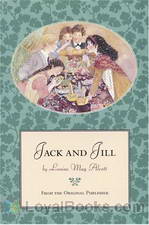 Jack and Jill
Jack and Jill
Louisa May Alcott, more famously known for her Little Women series, takes a familiar nursery rhyme and creates a whole novel out of it in one of her last books Jack and Jill: A Village Story. Though she continued to publish under the penname AM Barnard, this book probably marked the end of a particular writing phase in 1880. Jack and Jill is set in the fictional Harmony Village. On a December afternoon, the youngsters of the village are out enjoying the bracing cold and snow. The bright winter shines down as they have fun skating and sledding... | |
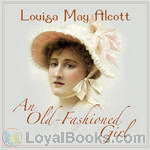 An Old-Fashioned Girl
An Old-Fashioned Girl
Polly Milton, a 14-year-old country girl, visits her friend Fanny Shaw and her wealthy family in the city for the first time. Poor Polly is overwhelmed by the splendor at the Shaws’ and their urbanized, fashionable lifestyles, fancy clothes and some other habits she considers weird and, mostly, unlikable. However, Polly’s warmth, support and kindness eventually win her the hearts of all the family members. Six years later, Polly comes back to the city to become a music teacher. | |
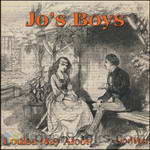 Jo's Boys
Jo's Boys
Jo’s Boys is the third book in the Little Women trilogy by Louisa May Alcott, published in 1886. In it, Jo’s “children”, now grown, are caught up in real world troubles. All three books – although fiction – are highly autobiographical and describe characters that were really in Alcott’s life. This book contains romance as the childhood playmates become flirtatious young men and women. The characters are growing up, going out into the world and deciding their futures. | |
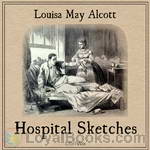 Hospital Sketches
Hospital Sketches
Alcott in 1862 served as a nurse in Georgetown, D.C during the Civil War. She wrote home what she observed there. Those harrowing and sometimes humorous letters compiled make up Hospital Sketches. | |
By: Louise Mack (1870-1935) | |
|---|---|
 Woman's Experiences in the Great War
Woman's Experiences in the Great War
An eye-witness account of the fall of Antwerp to the Germans in the opening months of World War I, Mack’s story has passages of extraordinary vividness and immediacy. Flawed by the most treacly sentiment in some places and the most ferocious anti-German invective in others, her account endures as an uncommonly forthright, passionate testimony to those tragic events and the ordinary people who were the true heroes of them. As a forty-something, coquettish war correspondent wrapped in sable furs... | |
By: Louisiana Purchase Exposition Commission | |
|---|---|
 Final Report of the Louisiana Purchase Exposition Commission
Final Report of the Louisiana Purchase Exposition Commission
| |
By: Lucy Aikin (1781-1864) | |
|---|---|
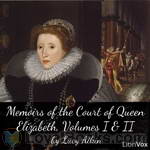 Memoirs of the Court of Queen Elizabeth, Volumes I & II
Memoirs of the Court of Queen Elizabeth, Volumes I & II
Memoirs of Queen Elizabeth from a variety of sources within the monarch's court, compiled and interpreted by Lucy Aikin. | |
By: Lucy Larcom (1824-1893) | |
|---|---|
 A New England Girlhood: Outlined From Memory
A New England Girlhood: Outlined From Memory
Lucy Larcom was an American poet, teacher, and mil-worker. According to Wikipedia: "Larcom served as a model for the change in women's roles in society." This is her colorful autobiography. Here, she tells about her happy childhood, and her time working in the mill. Along the way, she speaks about topics like morality, independence, love and loss inside a family, a strong belief in god, and the effects of being poor. Fans of Gene Stratton Porter, Fanny Fern and Susan Warner, and Ella Wheeler Wilcox will be delighted with this book. Lucy's sunny personality makes this book a very uplifting and interesting read. | |
By: Ludwig van Beethoven (1770-1827) | |
|---|---|
 Selected Letters of Beethoven
Selected Letters of Beethoven
A selection of Beethoven’s letters from the compilation by Dr. Ludwig Nohl and translated by Lady Grace Wallace. | |
By: Luke Joseph Doogue (1865-) | |
|---|---|
 Making a Lawn
Making a Lawn
| |
By: Lydia E. Pinkham Medicine Company | |
|---|---|
 Food and Health
Food and Health
| |
By: Lydia Maria Gurney | |
|---|---|
 Things Mother Used to Make
Things Mother Used to Make
| |
By: Lyman Carrier (1877-1963) | |
|---|---|
 Agriculture in Virginia, 1607-1699
Agriculture in Virginia, 1607-1699
| |
By: Lyndon Orr pseudonym of Harry Thurston Peck (1856-1914) | |
|---|---|
 Famous Affinities of History: The Romance of Devotion
Famous Affinities of History: The Romance of Devotion
"Famous Affinities of History" is a book of passion-filled accounts of the most famous love affairs of history. The stories of Cleopatra, Victor Hugo, Honore de Balzac, Jonathan Swift, Charles Dickens, Karl Marx, Percy Bysshe Shelley, Byron, George Sand and other famous people of all times (even those of royal blood are not spared), are dealt with in Lyndon Orr's own interesting and suspenseful style. Written in four volumes, this book makes for an informative, interesting and thoroughly enjoyable read, giving us an insight into the lives and lifestyles of various popular figures of history. | |
By: Lysander Spooner | |
|---|---|
 Essay on the Trial by Jury
Essay on the Trial by Jury
FOR more than six hundred years that is, since Magna Carta, in 1215 there has been no clearer principle of English or American constitutional law, than that, in criminal cases, it is not only the right and duty of juries to judge what are the facts, what is the law, and what was the moral intent of the accused; but that it is also their right, and their primary and paramount duty, to judge of the justice of the law, and to hold all laws invalid, that are, in their opinion, unjust or oppressive, and all persons guiltless in violating, or resisting the execution of, such laws... | |
By: Lytton Strachey (1880-1932) | |
|---|---|
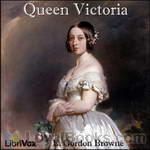 Queen Victoria
Queen Victoria
Lytton Strachey’s first great success, and his most famous achievement, was “Eminent Victorians” (1918), a collection of four short biographies of Victorian heroes. With a dry wit, he exposed the human failings of his subjects and what he saw as the hypocrisy at the centre of Victorian morality. This work was followed in the same style by “Queen Victoria” (1921). | |
By: M. C. (Maurice Chase) Burritt (1883-) | |
|---|---|
 Apple Growing
Apple Growing
| |
By: M. M. Mangasarian (1859-1943) | |
|---|---|
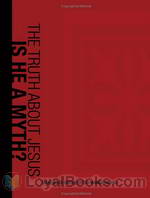 The Truth About Jesus. Is He a Myth?
The Truth About Jesus. Is He a Myth?
The following work offers in book form the series of studies on the question of the historicity of Jesus, presented from time to time before the Independent Religious Society in Orchestra Hall, Chicago, 1909. No effort has been made to change the manner of the spoken, into the more regular form of the written, word. | |
By: M. M. Pattison Muir (d1931) | |
|---|---|
 The Story of Alchemy and the Beginnings of Chemistry
The Story of Alchemy and the Beginnings of Chemistry
A light journey through the history of chemistry, from its start in the obscure mysteries of alchemy to what was, for the author, the cutting edge of the development of modern atomic theory … and whose developing blind ends we can now see with the advantage of hind sight. | |
By: Mabel Osgood Wright (1859-1934) | |
|---|---|
 The Garden, You, and I
The Garden, You, and I
| |
By: Magdalene Horsfall (1884-1936) | |
|---|---|
 Fairy Latchkey
Fairy Latchkey
Philomene Isolde is a good little girl, but has been very lonely since the death of her mother. Playing make-believe in the garden, Philomene is surprised when she meets a little man in a green suit who invites her to Fairyland. | |
By: Mallanaga Vatsyayana | |
|---|---|
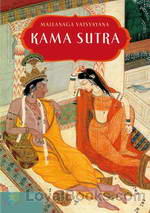 The Kama Sutra
The Kama Sutra
The Kama Sutra, or Aphorisms on Love, has survived at least 1400 years as a dominant text on sexual relations between men and women. Vatsyayana claimed to have written the Kama Sutra while a religious student, “in contemplation of the Deity” - but references to older works, shrewd disputations by Vatsyayana of those authors' recommendations, and careful cataloging of practices in various of the Indian states indicate much more emphasis on kama, or sensual gratification. Part of the book discusses the 64 arts of love employed by masters of coitus... | |
By: Mamie Dickens (1838-1896) | |
|---|---|
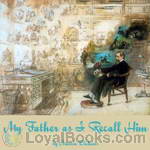 My Father As I Recall Him
My Father As I Recall Him
“If, in these pages, written in remembrance of my father, I should tell you, my dear friends, nothing new of him, I can, at least, promise you that what I shall tell will be told faithfully, if simply, and perhaps there may be some things not familiar to you.” So begins chapter one of My Father as I Recall Him, the personal recollections of Mary Dickens, (Mamie, as she was called), the oldest daughter of the great novelist, Charles Dickens. | |
By: Marcel Dupont (1879-1964) | |
|---|---|
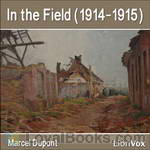 In the Field (1914-1915)
In the Field (1914-1915)
I have merely tried to make a written record of some of the hours I have lived through during the course of this war. A modest Lieutenant of Chasseurs, I cannot claim to form any opinion as to the operations which have been carried out for the last nine months on an immense front. I only speak of things I have seen with my own eyes, in the little corner of the battlefield occupied by my regiment. | |
By: Marcus Aurelius (121-180) | |
|---|---|
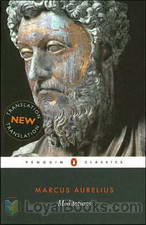 Meditations
Meditations
Marcus Aurelius was a Roman Emperor and philosopher who wrote Meditations; insights which were considered to give the meaning of life. The book was not written with the intent to be published. It offers a noteworthy chain of challenging situations which are a reflection on spirituality and enumerate the struggle to understand oneself and one's role in the universe. Written in the style of a journal, Meditations emphasizes that life in this world is short. Aurelius was a stoic philosopher who had influenced the thoughts of many leaders in his time... | |
By: Marcus Tullius Cicero | |
|---|---|
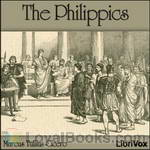 The Philippics
The Philippics
A philippic is a fiery, damning speech delivered to condemn a particular political actor. The term originates with Demosthenes, who delivered an attack on Philip II of Macedon in the 4th century BCE.Cicero consciously modeled his own attacks on Mark Antony, in 44 BC and 43 BC, on Demosthenes’s speeches, and if the correspondence between M. Brutus and Cicero are genuine [ad Brut. ii 3.4, ii 4.2], at least the fifth and seventh speeches were referred to as the Philippics in Cicero’s time. They were also called the Antonian Orations by Aulus Gellius... | |
 Letters of Marcus Tullius Cicero
Letters of Marcus Tullius Cicero
| |
By: Marcus Vitruvius Pollio (75 BC - c. 15 BC) | |
|---|---|
 Ten Books on Architecture
Ten Books on Architecture
On Architecture is a treatise on architecture written by the Roman architect Vitruvius and dedicated to his patron, the emperor Caesar Augustus as a guide for building projects. The work is one of the most important sources of modern knowledge of Roman building methods as well as the planning and design of structures, both large (aqueducts, buildings, baths, harbours) and small (machines, measuring devices, instruments). He is also the prime source of the famous story of Archimedes and his bath-time discovery. | |
By: Margaret Fuller (1810-1850) | |
|---|---|
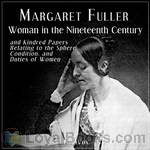 Woman in the Nineteenth Century and Kindred Papers Relating to the Sphere, Condition, and Duties of Women
Woman in the Nineteenth Century and Kindred Papers Relating to the Sphere, Condition, and Duties of Women
Margaret Fuller (1810-1850) was an American feminist, writer, and intellectual associated with the Transcendentalist movement. Her book Woman in the Nineteenth Century (1845) is considered the first major feminist work in the United States. Her life was short but full. She became the first editor of the transcendentalist journal The Dial in 1840, before joining the staff of the New York Tribune under Horace Greeley in 1844. By the time she was in her 30s, Fuller had earned a reputation as the best-read person in New England, male or female, and became the first woman allowed to use the library at Harvard College... | |
By: Margaret Louise [Editor] Newhall | |
|---|---|
 The 1926 Tatler
The 1926 Tatler
| |